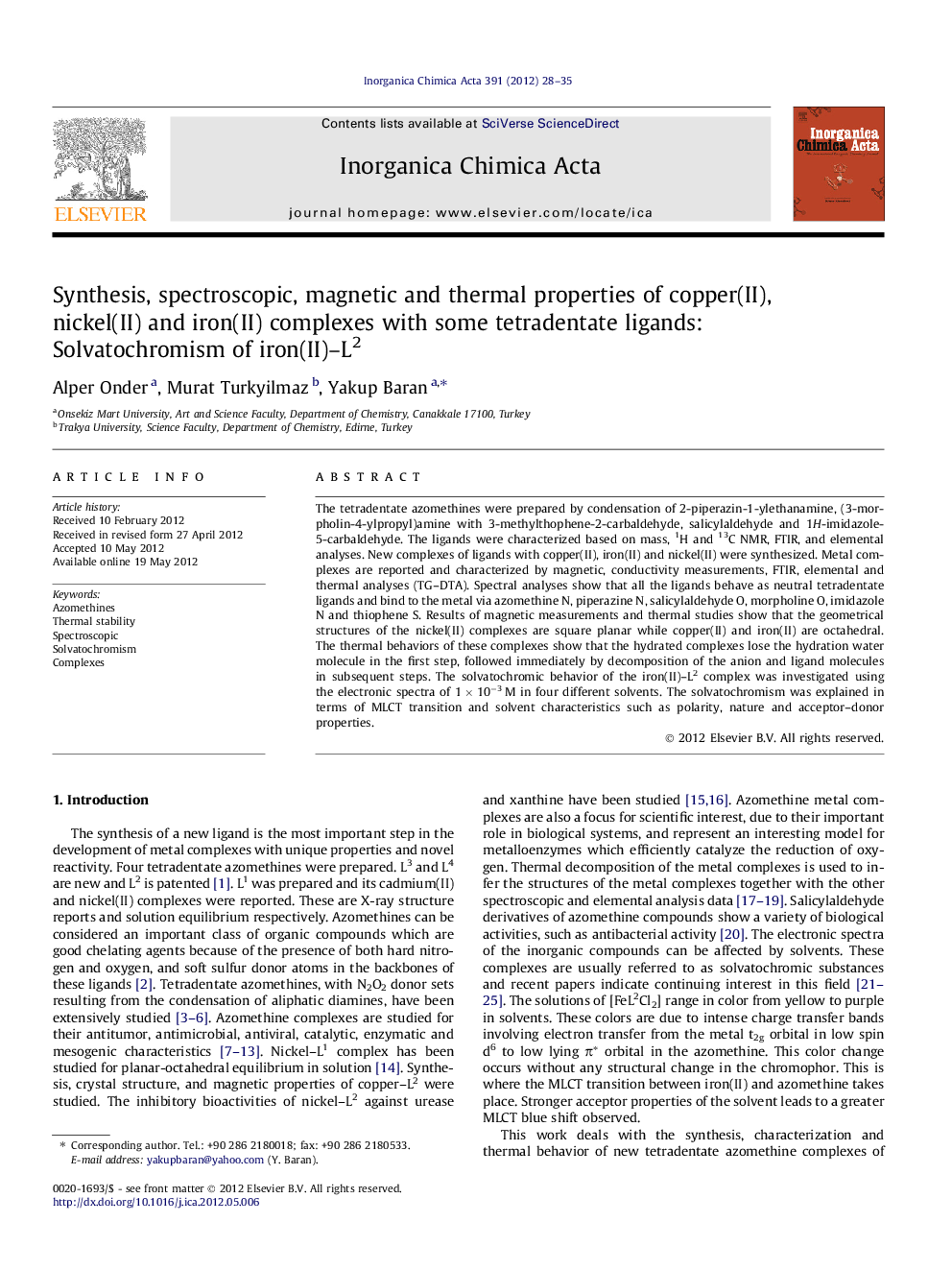| کد مقاله | کد نشریه | سال انتشار | مقاله انگلیسی | نسخه تمام متن |
|---|---|---|---|---|
| 1312391 | 1499196 | 2012 | 8 صفحه PDF | دانلود رایگان |

The tetradentate azomethines were prepared by condensation of 2-piperazin-1-ylethanamine, (3-morpholin-4-ylpropyl)amine with 3-methylthophene-2-carbaldehyde, salicylaldehyde and 1H-imidazole-5-carbaldehyde. The ligands were characterized based on mass, 1H and 13C NMR, FTIR, and elemental analyses. New complexes of ligands with copper(II), iron(II) and nickel(II) were synthesized. Metal complexes are reported and characterized by magnetic, conductivity measurements, FTIR, elemental and thermal analyses (TG–DTA). Spectral analyses show that all the ligands behave as neutral tetradentate ligands and bind to the metal via azomethine N, piperazine N, salicylaldehyde O, morpholine O, imidazole N and thiophene S. Results of magnetic measurements and thermal studies show that the geometrical structures of the nickel(II) complexes are square planar while copper(II) and iron(II) are octahedral. The thermal behaviors of these complexes show that the hydrated complexes lose the hydration water molecule in the first step, followed immediately by decomposition of the anion and ligand molecules in subsequent steps. The solvatochromic behavior of the iron(II)–L2 complex was investigated using the electronic spectra of 1 × 10−3 M in four different solvents. The solvatochromism was explained in terms of MLCT transition and solvent characteristics such as polarity, nature and acceptor–donor properties.
The tetradentate azomethines were prepared and characterized based on mass, NMR, FTIR, and elemental analyses. Cu(II), Fe(II) and Ni(II) complexes are reported and characterized by magnetic, conductivity measurements, FTIR, elemental and thermal analyses (TG–DTA). The solvatochromic behavior of the Fe–L2 complex was investigated. The solvatochromism was explained in terms of MLCT transition and polarity of solvent and acceptor–donor properties.Figure optionsDownload as PowerPoint slideHighlights
► Cu(II), Ni(II) and Fe(II)complexes of some tetradentate ligands were prepared.
► Thermal identifications were supported by the other spectroscopic methods.
► Solvatochromic property of the iron complex was observed.
► The presence of water keeps the structure less flexible with hydrogen bonds.
Journal: Inorganica Chimica Acta - Volume 391, 30 August 2012, Pages 28–35